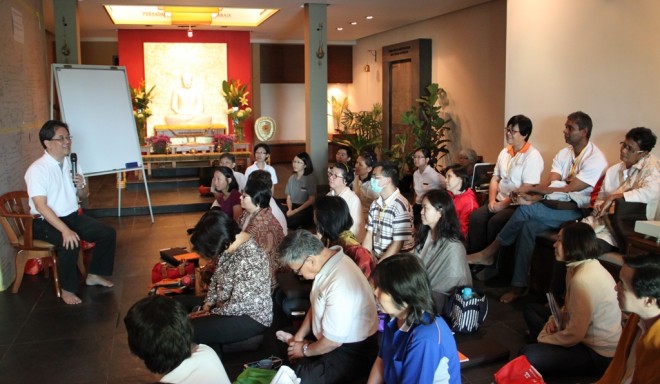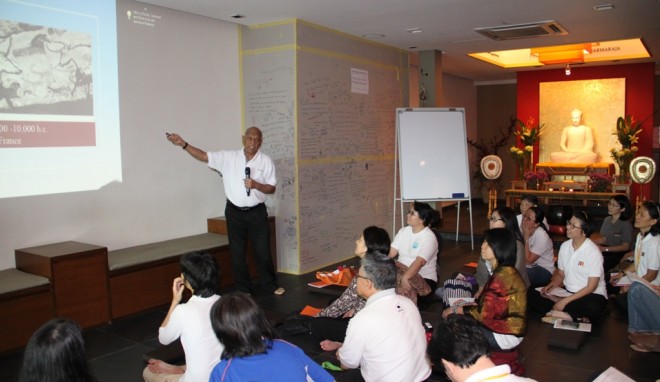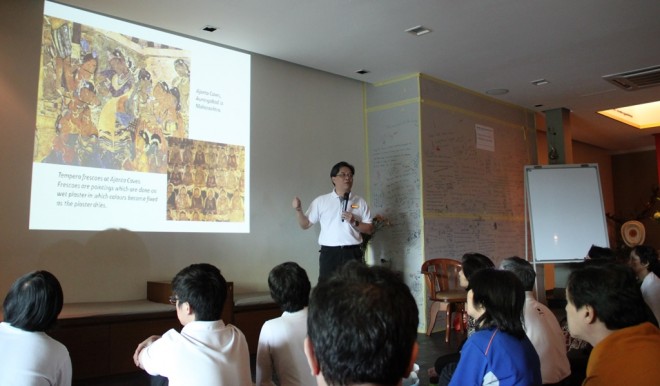BPS402 – Lecture 10 on ‘Buddhist Arts & Culture’
BPS402 – Lecture 10 on ‘Buddhist Arts & Culture’
Report by Tung Wai Hau
On Saturday 8 November, two of Nalanda Institute’s distinguished lecturers, Achariya Vijaya Samarawickrama and Achariya Tan Siang Chye delivered the lecture on ‘Buddhist Arts & Culture’. Students eagerly attended this last lecture of the 5-month BPS402 – Higher Certificate in Buddhist Studies course.
Achariya Vijaya mentioned that arts are connected to religious purposes, having evolved from cave wall paintings to carvings as bas reliefs, and eventually to creation of statues. Uncle Vijaya explained the purposes of building the three kinds of stupas – ‘Uddesika’, ‘Paribhogika’ and ‘Saririka’ stupas. King Asoka, besides his famous missionary work, left a huge legacy of Buddhist architecture in the forms of stupas, the Asokan pillars with inscriptions and the lion capitals.
Achariya Tan Siang Chye encouraged students to review the purpose of producing religious arts and artefacts. In concluding the lecture, Achariya Tan Siang Chye cautioned about getting attached to forms. As practising Buddhists, we should instead appreciate the Dhamma and meaning behind the symbols and iconographies.

Achariya Tan Siang Chye, Director of Nalanda Institute encouraged participants to continue learning and practicing the Dhamma.
We thank Achariyas Vijaya and Tan Siang Chye for their informative lectures and their guidance to students throughout these 5-month BPS402 course. Sadhu!



